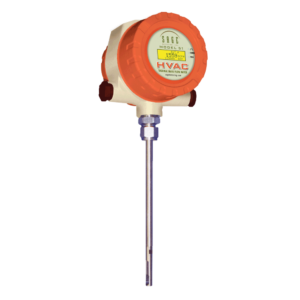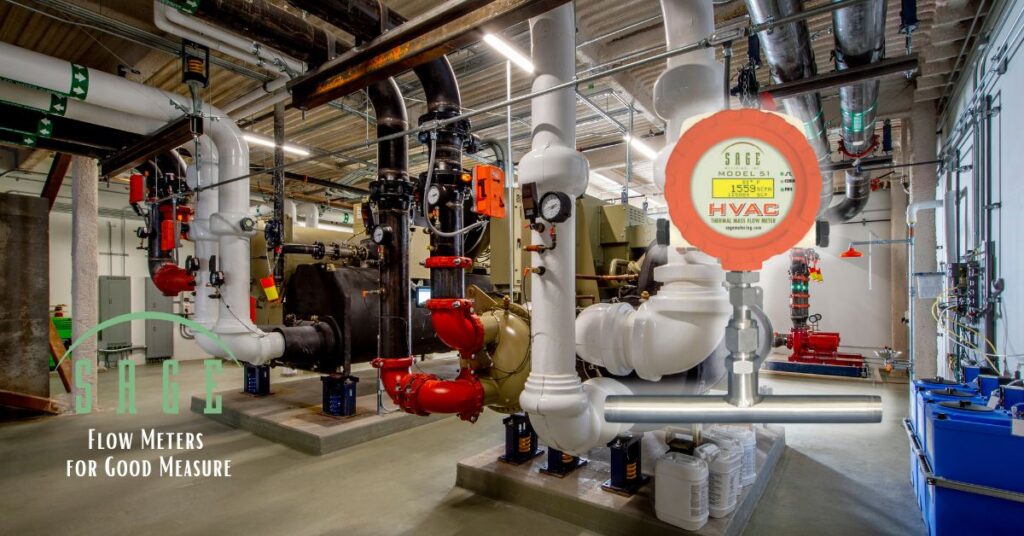Modern mechanical rooms pack increasingly complex systems into limited spaces. Building designers and facility managers face mounting pressure to minimize mechanical room footprints while maintaining system efficiency. Traditional flow measurement installations often require extensive straight pipe runs – typically 15-20 pipe diameters upstream and 5-10 downstream. These requirements can be impossible to meet in tight spaces.
The Sage Model 51 addresses these challenges through innovative design features that reduce space requirements while maintaining measurement accuracy. The compact instrument housing (4-1/8″ diameter by 4-1/4″ deep) allows for installation in tight spaces, while the built-in flow conditioner ensures accurate measurement without extensive straight pipe runs.
How Flow Conditioners Work
Flow conditioners create a uniform, fully developed flow profile in a shorter distance than naturally occurring in straight pipe runs. By incorporating precisely engineered flow conditioning elements, these devices:
- Eliminate swirl and asymmetric flow patterns
- Create consistent velocity profiles
- Reduce the required straight pipe run length by up to 80%
The Model 51 Advantage
The Sage Model 51 HVAC Series includes built-in flow conditioning in all inline models (1/2″ and up). This integrated design offers several benefits:
- Simplified installation in tight spaces
- No additional components to purchase or maintain
- Factory calibration that accounts for the flow conditioner’s presence
- Maintained measurement accuracy despite reduced straight-run requirements
Smart Solutions for Complex Installations
When installing gas flow meters in cramped mechanical rooms, several factors require consideration:
- Available straight pipe run length
- Proximity to valves and other flow disturbances
- Access for maintenance and calibration verification
- Integration with existing systems
- Future expansion needs
HVAC Installation Best Practices
Successful HVAC installations in limited spaces depend on careful planning and execution:
- Site Assessment
- Document available space
- Map existing utilities and obstacles
- Identify potential mounting locations
- Consider ventilation requirements
- Plan access for maintenance
- Pre-Installation Preparation
- Verify pipe specifications
- Check power availability
- Confirm communication requirements
- Review safety considerations
- Prepare necessary tools and equipment
Performance Optimization

The Model 51 maintains high accuracy through:
Mechanical Features:
- Strategic sensor positioning
- Optimized flow geometry
- Robust mounting hardware
- Quality connection fittings
Electronic Features:
- Advanced signal processing
- Built-in diagnostics
- Temperature compensation
- Pressure insensitivity
Planning for the Future
Consider these factors when planning your installation:
- Potential system expansions
- Changing regulatory requirements
- Energy efficiency goals
- Building management system integration
- Long-term maintenance needs
Get Expert Help with Your HVAC Installation
Planning a flow meter installation in a tight space requires careful consideration for optimal performance. With over 20 years of experience in flow measurement technology, our team can help determine the best configuration for your specific application.
Contact our team today at (831) 242-2030 or request a quote now for the Model 51 HVAC Series thermal mass flow meter.


